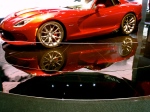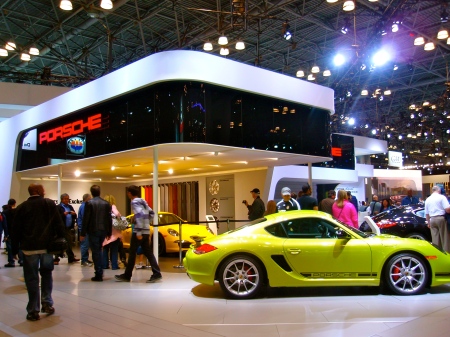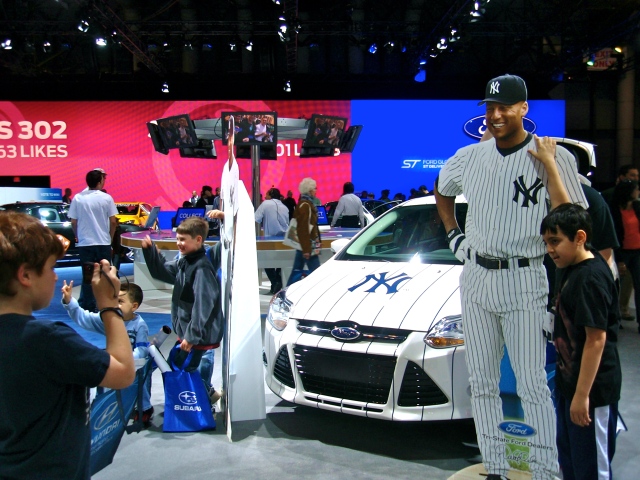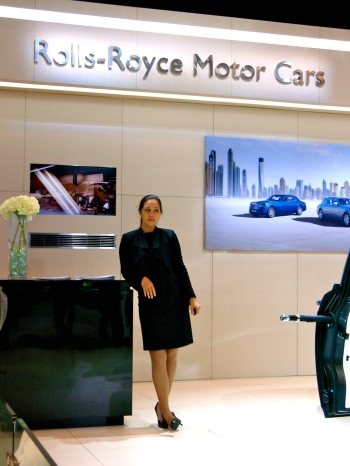 In the hustle and bustle of a return to my “normal” life as a student in Israel, I had to put on hold for a bit my reflections on the differences between the car culture in Israel and New York.
In the hustle and bustle of a return to my “normal” life as a student in Israel, I had to put on hold for a bit my reflections on the differences between the car culture in Israel and New York.
These reflections were formulated as I wandered the vast halls of Javits convention center in New York for the annual car show. The car show is something of a family tradition, though in past years it has been the exclusive domain of my father and brother.
Imagine a playground covering over 675,000 square feet of space. Now imagine that that playground is made up entirely of shiny new cars and motorcycles, and you have an inkling of how cool the Auto show is.
I made the rounds with my brother, slipping in and out of leather interiors and making informed comments over the size of the glove compartment of the new Jaguar (spacious) and the legroom of a Mini Cooper (Anti-Spacious). When we slipped into a new car, our identities and personas were subtly changed, from a family on mile 400 of a grueling road trip (minivan) to chic business people on our way to the company retreat in the Hamptons (Audi luxury sedan).
The car show made me think of the unique bond Americans have with their cars. For us, cars are more than a motor conveyance; they are an accessory, indicative of the kind of lifestyle we have, or wish we had. My father leases his car instead of purchasing because he (and by extension, the rest of the family) derives a child-like pleasure in switching vehicles every 3 1/2 years. I can look back on my life easily by recalling the sequence of automobiles:
Ages 0-21.5:
- Red car (make unknown),
- Green Ford station wagon with the awesome back seats,
- Undistinguished grey Saturn sedan, black Ford Crossover (11-14),
- Black Ford Explorer (14-18),
- Black Toyota Rav4,
- Black Toyota Rav4 Sports edition with sunroof.
As you can tell by the list, sometime after the age of ten (after the Saturn) my mother made her preference for black cars known.
In Israel you would be hard put to find a black car, or any dark colored car for that matter. In a country so damn hot, attracting more sun to a black metal rooftop is simply not worth it. The majority of the cars on the road are white or light colored, and the most of them are sedans or tiny cars imported from Europe. Israel lacks the wide open spaces America has to experiment with bigger and bigger cars, all the more so because Israeli cities are for the most part based on ancient foundations that are not conducive to extensive road-widening. In an effort to reduce the traffic on already congested roads, the government places high import taxes on any cars being sold in the country, making a car an expensive commitment.
I don’t drive very much; by the time I got my license I was out of the house on my way to college in Herzliya, a suburb off of Tel- Aviv where having a car is unnecessary, especially for a student on a budget. The beauty of the car show is that you don’t need to drive to appreciate the cars, it’s the appreciation of the people who love them that makes it so much fun.
I needed to take a picture of this to prove such a thing could exist. At the Porsche stall, a little gift section was placed with cutesy, asshole-y things like gold cufflinks with the Porsche logo or a sign that read “Porsche Parking Only”. But this, the set of Porsche ice cubes for $20.00 took the cake. Who wouldn’t want one of these baby’s?
The Ladies of the Car Show:
Some cars were so special they had their own private lady person standing around next to them, presumably to look pretty while guarding the car from theft. They all looked really bored.








